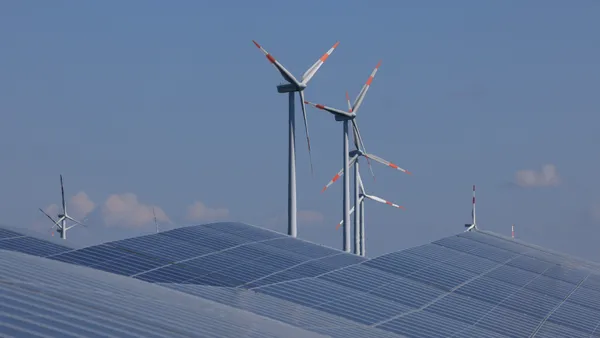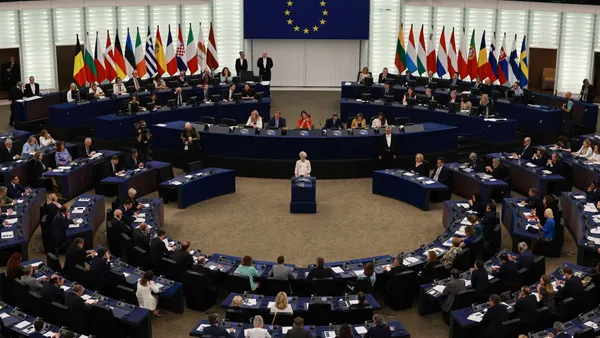Dive Brief:
- Puma said earlier this month it plans to increase the scale of its textile recycling efforts and replace recycled polyester with proprietary Re:Fibre materials in all its soccer club and federation replica jerseys beginning in 2024.
- The company said garments previously made from “only recycled plastic bottles” would instead be made “using RE:FIBRE recycled materials that were made of old garments and factory waste,” per the release.
- The brand also revealed an experimental capsule collaboration with U.S. upcycler Andrew Burgess and his Vivid Visions brand last week that uses Re:Fibre to create one-off bespoke designs meant to showcase the fabric and promote the technology used to create it.
Dive Insight:
Puma’s Re:Fibre pilot program launched in 2022 and originally created recycled training jerseys for the company’s sponsored soccer clubs, per the release. The company said the program was later used to create Switzerland and Morocco replica kits for the Women’s World Cup as well as a kit for Barcelona’s Girona team.
Next year’s expansion means that most official Puma soccer replica jerseys for the Euro and Copa América tournaments will be manufactured using Re:Fibre’s recycled materials, said the company, with the exception of “locally sourced kits” and replicas including those made for Turkey’s Fenerbahçe SK and Ukraine’s Shakhtar Donetsk.
Puma’s Re:Fibre recycling process is part of the company’s plan “to address the challenge of textile waste via a long-term solution for recycling,” per the release.
“The technology also looks to diversify the fashion industry’s main source of recycled polyester in garments from being less reliant on clear plastic bottles,” said Puma, adding that the process uses any polyester material, including factory offcuts, faulty goods and pre-loved clothes, and that this “allows new garments to be recycled from any colour textile to any colour desired.”
In the release about his collaboration with Puma, Burgess, who is known for his work with repurposed clothing, said he found Re:Fibre production process “eye-opening.”
“When I think of garment production, I think of the final sewing stage where the fabric comes together to make the finished product as that’s typically my upcycling process,” he said. “But learning exactly what goes into breaking down old textiles — that would potentially have otherwise gone to landfill — before they become something new was super interesting.”
Eventually, Puma aims to have 100% of its recycled polyester materials come from textile waste, the company said in its release regarding soccer jerseys.
“Rethinking how we produce garments and experimenting with ways that we can move towards a more circular business model is one of the main priorities of our sustainability strategy,” Anne-Laure Descours, the company’s chief sourcing officer, said in the release.
The main energy source for the chemical recycling of textiles to textiles is electricity, according to Howard Williams, Puma’s director of global innovation for apparel and accessories. The process involves “shredding, dissolving, filtering, repolymerization, and finally extrusion to produce the new polyester chips,” Williams said in an email. “The fact that the recycling is powered by electricity, means that we can use electricity from renewable generation.”
Once Puma executives learned more about the recycling process, they started to search for other companies who could do the same in other locations globally, said Williams.
“We are now rolling out the use of chemically recycled Polyester in Asia at scale,” he said, adding that he expects the process to produce more than 2 million garments using this process in the region in 2024.














